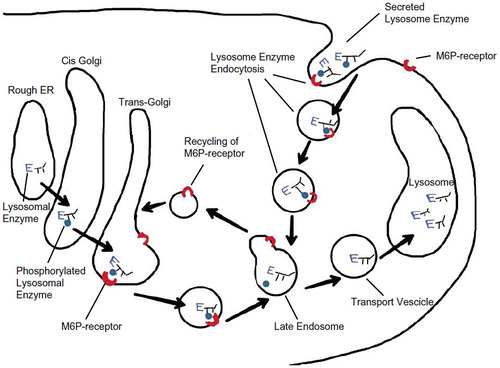Figures & data
Figure 1 Lysosomal recombinant iduronate-2-sulfatase transport.
Abbreviations: M6P, mannose-6-phosphate; ER, endoplasmic reticulum.

Table 1 Clinical, laboratory, and instrumental endpoints used to assess efficacy of treatment with idursulfase
Table 2 Efficacy of treatment with idursulfase
Table 3 The most frequent adverse drug reactions observed during treatment with idursulfase

